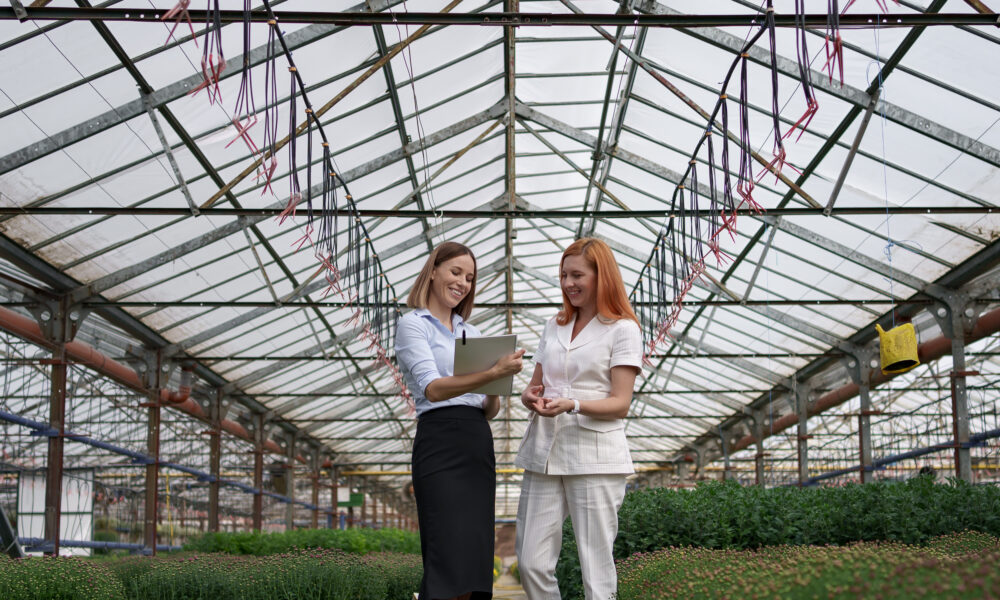Shade Cloth for Greenhouse: An Essential Guide – TechBullion

Greenhouses provide a controlled environment for plants, protecting them from adverse weather conditions while allowing for extended growing seasons. However, managing temperature and light levels within a Shade Cloth For Greenhouse can be challenging, especially during the hotter months. Shade cloth is an effective solution to regulate these factors, ensuring optimal plant growth. This article explores the benefits, types, and installation methods of shade cloth for greenhouses.
Benefits of Using Shade Cloth
Temperature Regulation
Shade cloth helps to control the temperature within a greenhouse by reducing the amount of sunlight that penetrates the structure. This is crucial during summer when excessive heat can stress plants and impede their growth. By blocking a portion of the sunlight, shade cloth lowers the interior temperature, creating a more suitable environment for plants.
Light Management
Different plants have varying light requirements. Shade Cloth For Greenhouse allows gardeners to customize the light levels in their greenhouse to match the needs of specific plants. This flexibility is particularly beneficial for growing shade-loving plants or protecting delicate seedlings from intense sunlight.
Energy Efficiency
Using shade cloth can reduce the need for additional cooling systems, such as fans and air conditioners, leading to significant energy savings. By naturally lowering the greenhouse temperature, shade cloth helps maintain an energy-efficient growing environment.
Protection from UV Rays
Prolonged exposure to UV rays can damage plants, leading to issues such as sunburn and reduced photosynthetic efficiency. Shade cloth with UV protection filters harmful rays, safeguarding plants from potential damage.
Types of Shade Cloth
Woven vs. Knitted Shade Cloth
- Woven Shade Cloth: Made from woven polyester or aluminum, this type of shade cloth is durable and provides consistent shading. It is typically used in permanent installations due to its heavy-duty nature.
- Knitted Shade Cloth: Constructed from knitted polyethylene, knitted shade cloth is more lightweight and flexible compared to woven types. It is resistant to tearing and fraying, making it ideal for temporary or seasonal use.
Shade Density
Shade cloth is available in various densities, typically ranging from 30% to 90%, indicating the percentage of light blocked. The choice of density depends on the specific light requirements of the plants being grown.
- 30%-50% Shade Cloth: Suitable for plants that require partial shade, such as lettuce, spinach, and certain ornamental plants.
- 60%-70% Shade Cloth: Ideal for most vegetables and flowers, providing moderate shading.
- 80%-90% Shade Cloth: Used for plants that need significant protection from direct sunlight, such as ferns and some tropical plants.
Color Options
Shade cloth comes in different colors, each offering unique benefits:
- Black: Provides maximum shading and UV protection but can absorb heat, potentially raising the temperature underneath.
- White: Reflects sunlight, helping to keep the greenhouse cooler while providing uniform light diffusion.
- Green: Blends with the natural environment and is often preferred for aesthetic reasons. It offers moderate heat absorption and shading.
Choosing the Right Shade Cloth
Plant Requirements
Understanding the specific light and temperature needs of the plants in your greenhouse is crucial. Research the optimal growing conditions for your plants and select a shade cloth that meets these requirements. For instance, shade-loving plants will benefit from higher-density shade cloth, while sun-loving plants may require lower densities.
Climate Considerations
Consider the local climate when choosing shade cloth. In regions with intense sunlight and high temperatures, a higher-density shade cloth might be necessary. Conversely, in cooler climates, a lower-density shade cloth can provide sufficient protection without overly reducing light levels.
Durability and Longevity
Evaluate the durability of the shade cloth material. Woven shade cloth, while more durable, can be heavier and less flexible. Knitted shade cloth, on the other hand, offers greater flexibility and resistance to tearing. Assess your specific needs and choose a material that will provide long-lasting performance.
Installation and Maintenance
Installation Methods
- Frame Installation: Secure the shade cloth to a frame or structure above the greenhouse. This method allows for easy removal and adjustment of the cloth as needed.
- Direct Attachment: Attach the shade cloth directly to the greenhouse structure using clips, ties, or grommets. This method provides a more permanent solution but can be less flexible for adjustments.
Tips for Effective Installation
- Proper Sizing: Ensure the shade cloth covers the entire greenhouse area for uniform shading. Measure the dimensions accurately before purchasing the cloth.
- Secure Fastening: Use durable fasteners to prevent the shade cloth from coming loose during windy conditions. Grommets and bungee cords are commonly used for secure attachment.
- Adjustability: Consider installing the shade cloth in a way that allows for easy adjustment or removal. This is especially useful for changing seasons or varying plant needs.
Maintenance Tips
- Regular Cleaning: Keep the shade cloth clean by removing debris and dust. Use a gentle hose spray to wash the cloth periodically.
- Inspect for Damage: Regularly check for signs of wear and tear, such as fraying or holes. Promptly repair any damage to ensure the cloth continues to provide effective shading.
- Seasonal Storage: If using the shade cloth seasonally, store it properly during the off-season. Clean and dry the cloth before storing it in a cool, dry place to prevent mold and mildew growth.
Conclusion
Shade cloth is an invaluable tool for greenhouse gardeners, offering numerous benefits such as temperature regulation, light management, and UV protection. By choosing the appropriate type, density, and color of shade cloth, and installing it correctly, gardeners can create an optimal growing environment for their plants. Regular maintenance will ensure the longevity and effectiveness of the shade cloth, contributing to the success of your greenhouse gardening endeavors.





